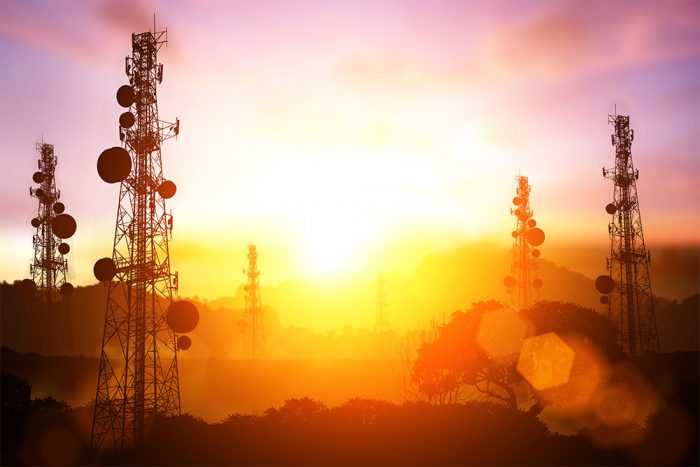
In today’s interconnected world, cell phone towers are crucial for maintaining seamless communication. They support the networks that allow you to make calls, send messages, and access the internet. Understanding the different types of cell phone towers is essential for appreciating their role in your daily life.
Explore the various types of cell phone towers, their features, applications, and benefits. By understanding these distinctions, you can better grasp how these structures contribute to the robust network infrastructure, especially in regions like Western Canada.
Introduction to Cell Phone Towers
Cell phone towers, also known as cell sites or base transceiver stations, are the backbone of mobile communication. They house the antennas and other equipment necessary to transmit and receive signals from mobile devices. The different types of cell phone towers are designed to meet various coverage and capacity needs. They vary in size, shape, and functionality, catering to both urban and rural environments.
Monopole Towers
Monopole towers are one of the most common types of cell phone towers. These structures are typically between 80 and 160 feet tall and are characterized by their single, tubular design. Monopole towers are often used in urban and suburban areas due to their relatively small footprint and aesthetic appeal.
Features of Monopole Towers
- Design: Monopole towers consist of a single pole, which makes them less visually intrusive compared to lattice towers.
- Height: They range from 80 and 160 feet, suitable for areas with moderate coverage requirements.
- Capacity: These towers can support multiple antennas, making them versatile for different network needs.
Applications of Monopole Towers
Monopole towers are ideal for urban and suburban settings where space is limited, and aesthetic considerations are important. They are commonly found near highways, in commercial areas, and in residential neighborhoods where zoning regulations are stringent.
Benefits of Monopole Towers
- Space-efficient: Require less ground space compared to other types of cell phone towers.
- Aesthetics: Their sleek design makes them less obtrusive in residential areas.
- Versatility: Can be adapted to support various types of mobile networks.
In Western Canada, cities like Edmonton and Calgary benefit from monopole towers, which blend well into the urban landscape while providing robust network coverage.
Lattice Towers
Lattice towers, also known as self-supporting towers, are another prevalent type of cell phone tower. These structures are characterized by their open-frame design and are typically used in areas requiring substantial coverage and capacity.
Features of Lattice Towers
- Design: Lattice towers have a triangular or square base and are constructed with a lattice framework, providing stability and strength.
- Height: They can range from 65 to 165 feet, suitable for both urban and rural applications.
- Capacity: These towers can support a significant number of antennas and heavy equipment.
Applications of Lattice Towers
Lattice towers are often used in rural and remote areas where high elevation is needed to cover large distances. They are also employed in urban areas where multiple carriers need to share a single tower.
Benefits of Lattice Towers
- Durability: The lattice design offers high stability, making them suitable for areas with harsh weather conditions.
- High Capacity: Can accommodate many antennas, making them ideal for high-demand areas.
- Versatility: Suitable for both rural and urban environments.
In provinces like Alberta, lattice towers are crucial for ensuring connectivity in remote areas, where they can cover extensive terrains and support multiple service providers.
Guyed Towers
Guyed towers are another type of cell phone tower known for their height and cost-effectiveness. These towers are supported by steel wires anchored to the ground, providing additional stability.
Features of Guyed Towers
- Design: Guyed towers are slender structures supported by steel wires, which help stabilize the tower.
- Height: These towers can be extremely tall, often exceeding 400 feet.
- Capacity: Can support numerous antennas, similar to lattice towers.
Applications of Guyed Towers
Guyed towers are typically used in rural and remote areas where space is not a constraint. Their tall structure allows them to cover vast areas, making them ideal for regions with sparse populations.
Benefits of Guyed Towers
- Cost-effective: Generally cheaper to build compared to other types of cell phone towers.
- High Coverage: Their height allows them to cover large geographical areas.
- Stable: Steel wires provide additional stability, making them suitable for various weather conditions.
Guyed towers are essential for providing network coverage across wide, open spaces, ensuring that even the most remote communities stay connected.
Stealth Towers
Stealth towers, also known as concealed or camouflaged towers, are designed to blend into their surroundings. These towers are often disguised as trees, flagpoles, or other structures to minimize their visual impact.
Features of Stealth Towers
- Design: Stealth towers are designed to look like natural or man-made structures, such as trees, flagpoles, or streetlights.
- Height: Varies widely depending on the disguise and location.
- Capacity: Can support multiple antennas, like other types of cell phone towers.
Applications of Stealth Towers
Stealth towers are used in areas where aesthetic concerns are paramount, such as residential neighborhoods, historical sites, and parks. They help maintain the visual appeal of the area while providing essential network coverage.
Benefits of Stealth Towers
- Aesthetically pleasing: Blends seamlessly into the environment, reducing visual pollution.
- Versatile: Can be designed to fit various settings and requirements.
- Effective: Provides necessary network coverage without compromising the area’s appearance.
Stealth towers are particularly popular in residential and commercial areas where traditional towers might be considered unsightly.
Small Cell Towers
Small cell towers, or small cell nodes, are a newer addition to the network infrastructure. These are compact, low-powered cellular radio access nodes that cover a smaller area, typically ranging from a few hundred meters to 2 kilometers.
Features of Small Cell Towers
- Design: Small and compact, often mounted on existing structures like streetlights, utility poles, or buildings.
- Height: Generally, much shorter than traditional cell towers, often only a few feet tall.
- Capacity: Designed to handle high data loads in densely populated areas.
Applications of Small Cell Towers
Small cell towers are primarily used in urban areas to enhance network capacity and coverage. They are essential for supporting high data traffic in areas with dense populations, such as downtown cores and event venues.
Benefits of Small Cell Towers
- Improved Coverage: Provides better coverage in densely populated urban areas.
- Increased Capacity: Handles high data traffic efficiently, improving overall network performance.
- Flexible Deployment: Can be easily installed on existing infrastructure, reducing the need for new towers.
Contact Tridon Communications
Understanding the different types of cell phone towers is crucial for appreciating the intricate network that keeps you connected. From the versatile monopole towers to the towering lattice structures, and from the cost-effective guyed towers to the discreet stealth designs, each type serves a unique purpose.
If you have any questions or need assistance with your communication infrastructure, contact Tridon Communications. Our experts are here to help you understand and optimize your network solutions.



